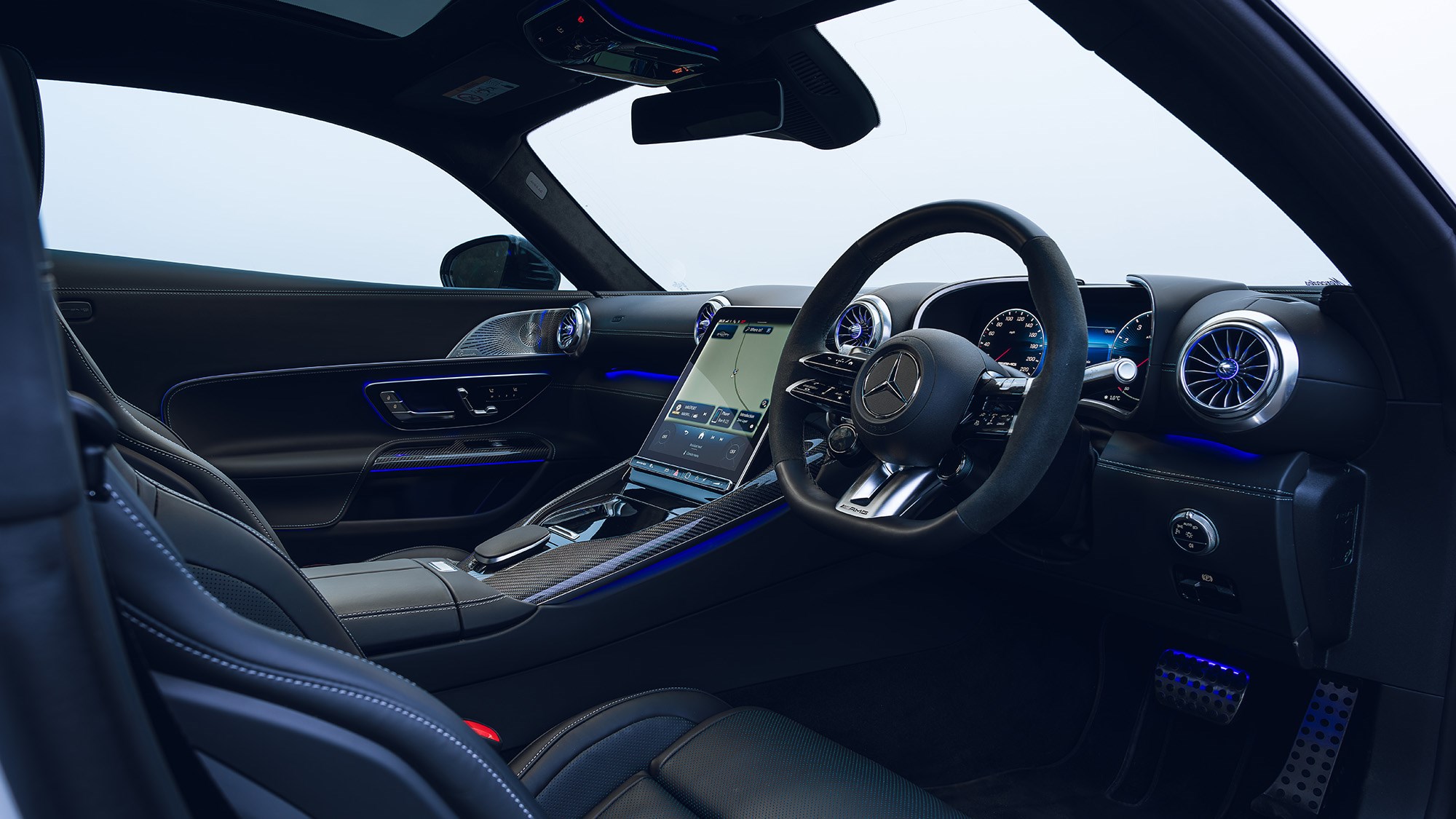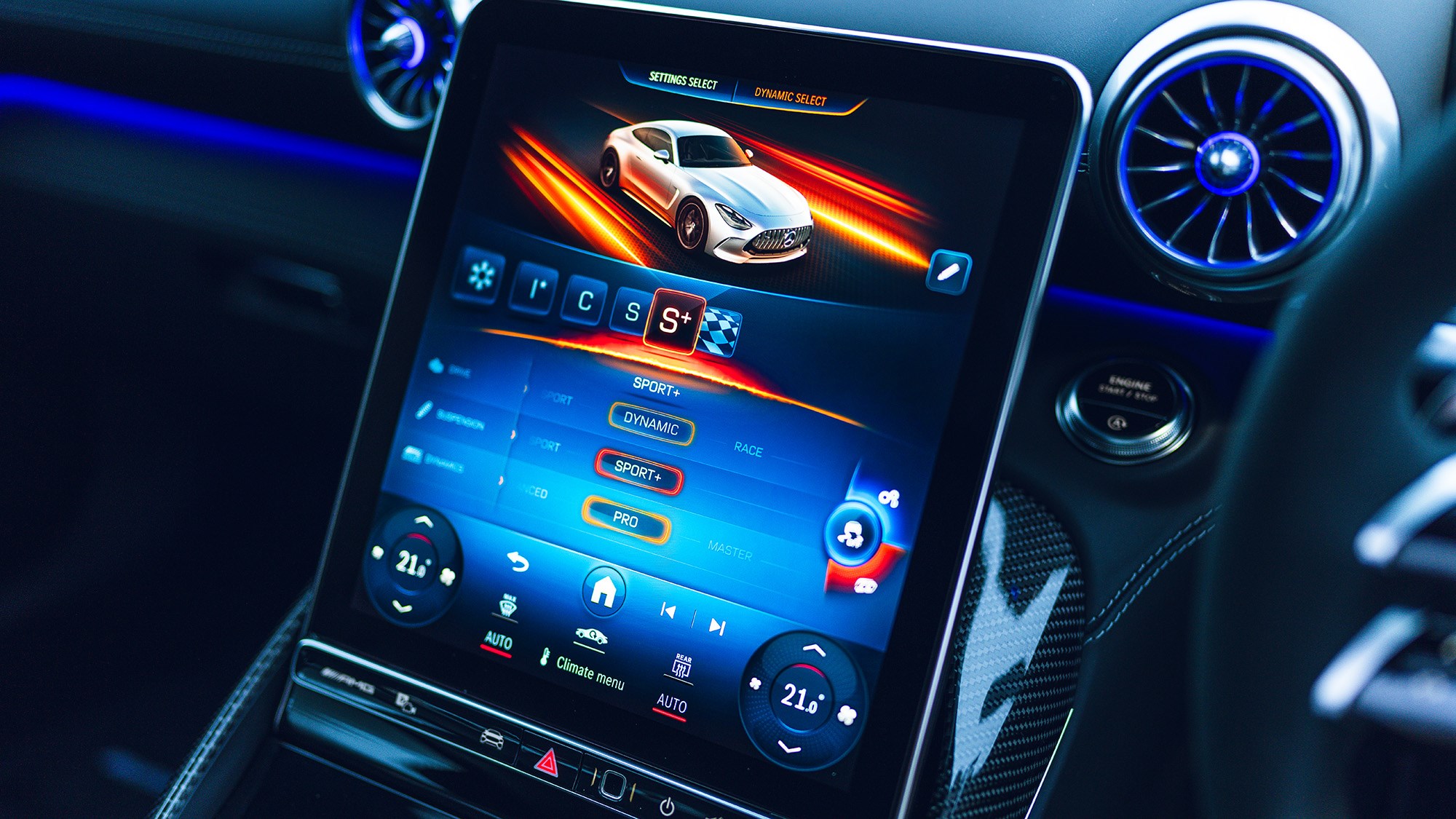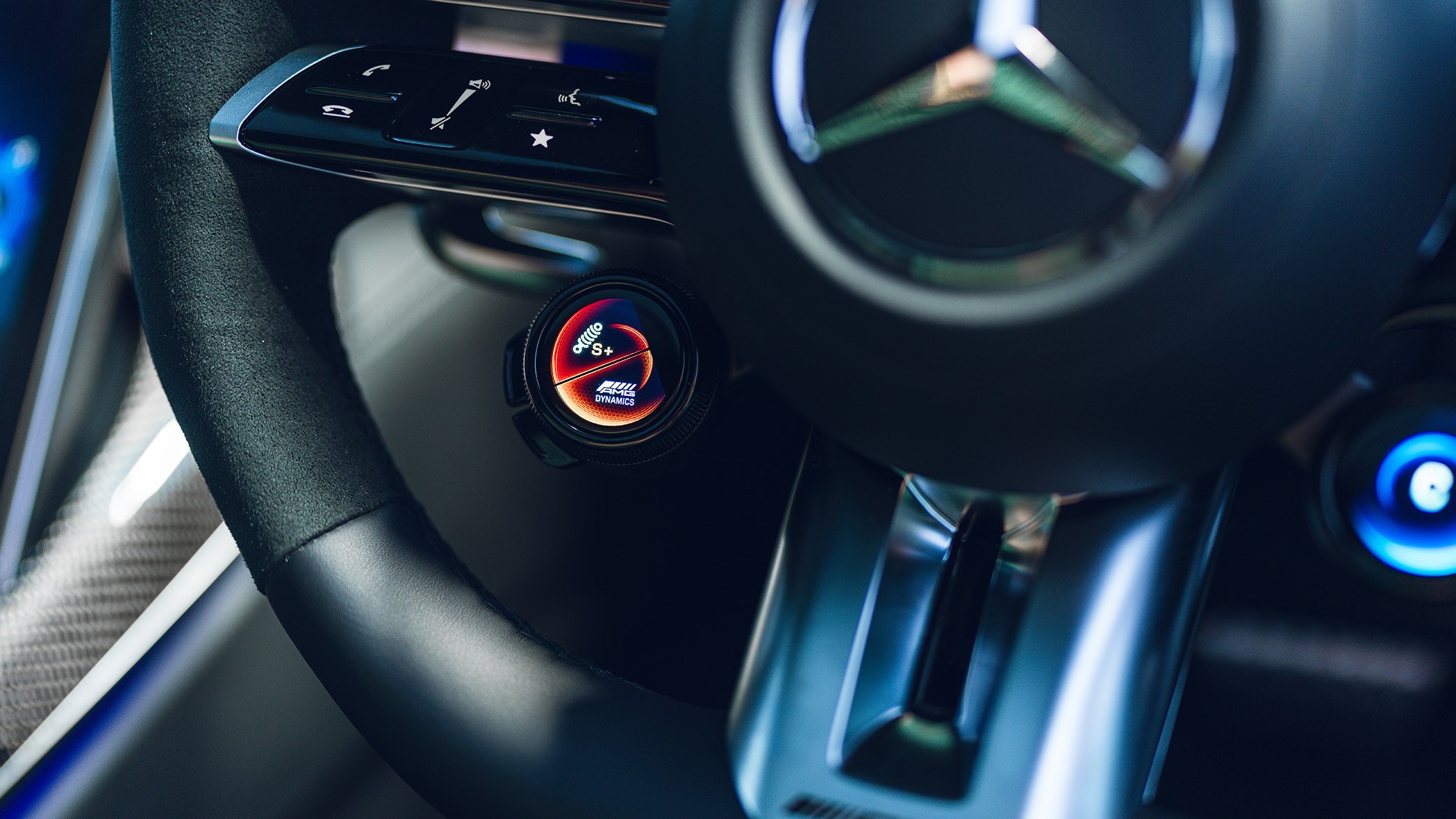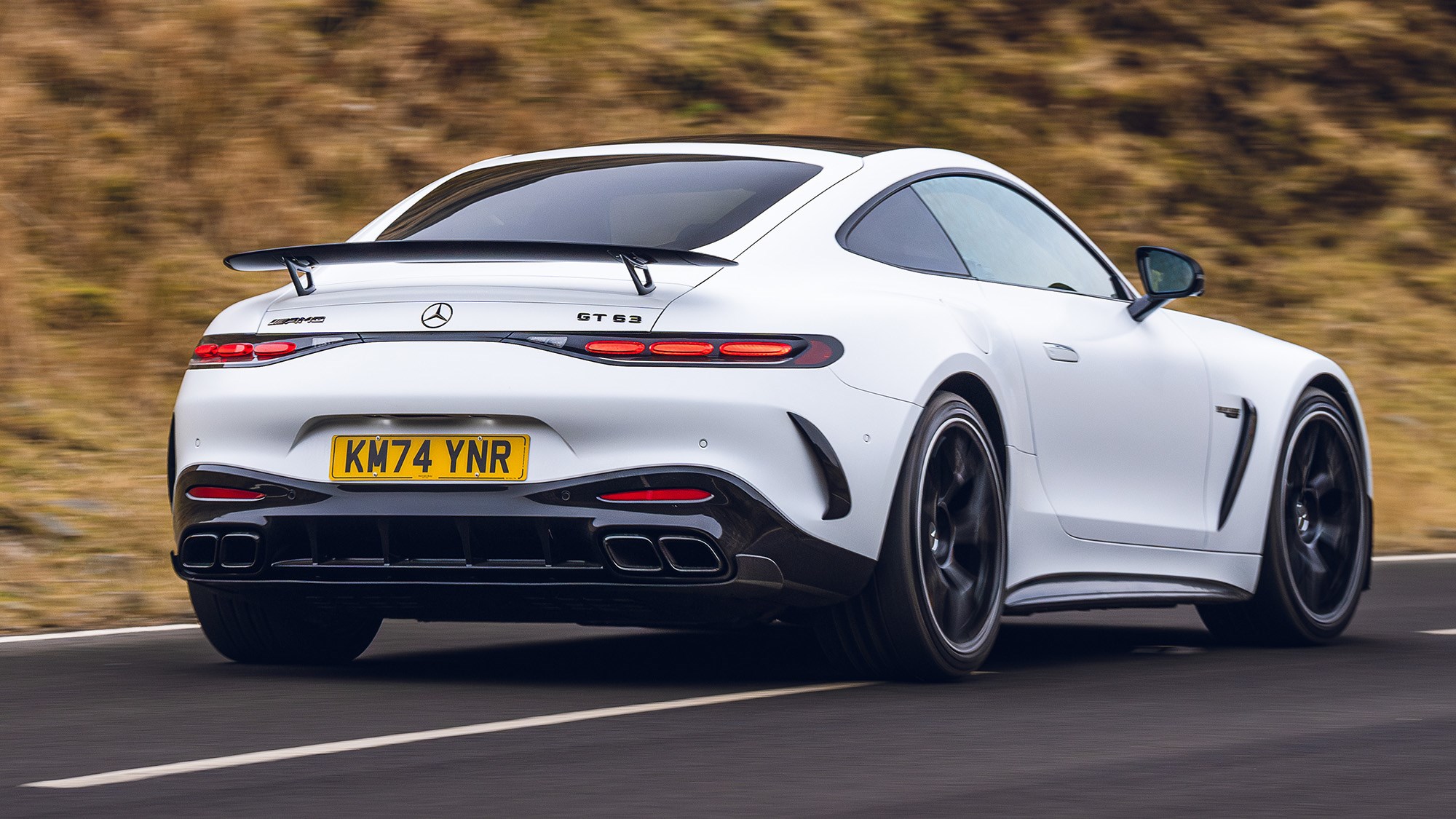► New Mercedes-AMG GT driven
► Bigger and heavier, but more capable
► V8-powered GT63 tested
Talk about a glamour division, the Mercedes AMG GT’s sports car weight category is now stronger than ever. The usual competition of Porsche 911 and Aston Martin Vantage are still very much in the mix, but it would appear the entire class has upped its game.
The 911 has gone hybrid, while the Vantage has had a near-full cosmetic overhaul to complement a healthy power boost. The AMG GT’s team has had to dig deep to keep its entrant relevant and enticing in such strong company, but even with the rivals aside, there was a fair bit of nail-biting going on by the AMG faithful in the run-up to its launch.
After all, the hyped four-cylinder AMG C63 E-Performance had fallen short of expectations, early SLs turned out to be poorly packaged and dynamically somewhat off-kilter efforts, and the AMG versions of the EQE and EQS were not the sub-brand’s brightest stars either.
To add to this concern, this new GT was announced weighing a hefty 270kg more than its predecessor, and it had swapped the coveted transaxle layout for a less charismatic all-wheel drive chassis. We’ve driven it in the Sierra Nevada, as well as on the twisting roads of south Wales. Read on for the full review from CAR, or head over to our how we test page to find out how we reached our verdict.
At a glance
Pros: Reactive front end, great sound, comfortable
Cons: Rivals feel quicker, chunky weight, interior could be more special
What’s new?
The latest GT 63’s power output of 577bhp from a twin-turbo 4.0-litre V8 matches that of the late GT R model – built from 2017 to 2021 – but length, width, height and wheelbase have all increased. Impressively, although the all-wheel drive model is four tenths quicker off the mark, the WLTP fuel consumption has increased by over 20%. Sometimes, progress comes in strange shapes and sizes.

Like the SL it shares its basic DNA with, the GT is on paper a 2+2-seater, but don’t let the type approval police catch you carrying rear passengers over five feet tall. That said, the new shape and hatchback boot opening mean the boot volume has gone up by 175 litre – now at a much more generous 321. With the optional rear bench folded, a cavernous cubicle awaits up to 675 litres of stowage.
Perhaps the biggest packaging-related difference between old and new is the driving position which was brought a full 200mm forward in a car that has grown 177mm in length. The effect is like switching from sulky to saddle: you feel much more in control now because the axle- to-dash ratio is less bridge-to-bow like, and moving the driver closer to the action also improves the front visibility.
What’s it like inside?
At a glance, you could be forgiven for thinking it has same cabin as the SL, but closer inspection reveals that the GT offers additional bespoke colours, eight different screen designs and seven shades of soft nappa leather.

It’s a beautifully made and lavishly appointed interior, no doubt about that. But compared to the minimalist SLS launched in 2009, the dashboard of the 2025 GT comes as a bit of a software-powered culture shock dreamt up by the world’s most creative designers, engineers, programmers and suppliers.
The cabin is plush for such a performance-focussed machine, with all the usual Merc mod cons like seat kinetics and various energising interior modes. After a four-hour motorway slog, we were aching a little but the seats did well to ward off most fatigue. In the company of other sports cars, though, the cabin almost seemed a bit… ordinary? The design appears no more stirring than the like you’d find in a high-spec Mercedes saloon or indeed the SL.

In contrast, the interior of the latest Aston Martin Vantage, though also the beneficiary of some Mercedes parts and tech, feels suitably racy, bespoke and as special as the gorgeous exterior design should demand. As the flagship baby sports car in Merc’s catalogue, we reckon a slightly more compelling interior would’ve felt better suited.
As for the infotainment, three displays and the most complex steering-wheel outside the Mercedes W14 F1 racer are one thing, getting a hang of the omni-present digital gist is another. After all, there are six driving programmes to choose from (Ice, Comfort, Sport, Sport+, Race, Individual) plus four different drivetrain calibrations (Reduced, Moderate, Sport, Dynamic), four AMG Dynamic Select options (Basic, Advanced, Pro and Master), three ESP options (On, Off, Sport Handling), and of course AWD or RWD, Launch Control and Drift mode.
When you don’t feel like playing, cylinder deactivation and lift-off coasting briefly flash the green flipside of the AMG medal.
Almost every other key trait can however be tuned in various strengths and flavours within the bigger picture coordinated by a black box which masterminds the front- and rear-wheel steering, engine and transmission, ESP/ASR/ABS and four-wheel drive, dampers and exhaust, not to forget the adaptive aerodynamics and the available front axle lift.

The list of mix and match configurations runs over many pages, and it’s surprisingly easy to get the set-up wrong because not everything that’s desirable is actually doable without triggering a negative side-effect or two.
What’s it like to drive?
The 0-62mph acceleration is a rorty 3.2sec blitzkrieg won thanks to the liquorice-meets-superglue compound of the latest Michelin Pilot 5S tyres and the all-wheel drive system which reverses the previous rear-bias 46/54 weight distribution without any grip or traction trade-offs whatsoever.

Although the rear wheels can steer at up 2.5deg, the turning circle is an embarrassing all-embracing 12.5metres against 10.9metres for the 911 turbo and 11.5metres for the previous GT R. The Coke-bottle silhouette and the extra-wide footprint collects plenty of likes from trendy city slickers, but when, in the middle of nowhere, one blind corner starts chasing the next, steering precision and non-negotiable grip are of the essence.
The GT delivers on all blacktops by fusing ferocious front-end bite with tenacious roadholding and awesome exit traction. You can play hooligan whenever you feel like it, but carving a clean flowing line is ultimately more rewarding because that way the 1970kg GT will carries very nearly as much speed and momentum through corners as the best certified sports cars.
Then it’s time for Dynamic Select in Race, ESP in Sport Handling, the dampers in Sport, Dynamic Select in Master mode and the transmission in Manual with no need at all for gears number six, seven and eight. But even with all systems on max attack, the upshifts were still not whiplash brutal, the ride retained a reassuring margin of compliance, the keen steering connected with aplomb, and although the life rear end went through all the angry motions like Dan the Doberman, it didn’t bite.

Going ten tenths on tricky unfamiliar roads – the sort than can derail you with an impromptu dusting of dirt or by dumping a small rock on the racing line – requires more confidence and that sixth sense than talent and courage.
You get plenty of warning before the limit of adhesion is reached, and if you’re deaf on that ear, the car typically supports catch and release over crash and grieve. We tried the steel brakes which are about as good as these things ever get, but if you are notorious for never reversing thrust before overshooting the apex of every bastard bend en route, then the carbon-fibres stoppers are definitely worth the extra eight grand or so.
Before you buy
The car we tested was an AMGT GT 63 4MATIC+ model, starting from £161,300 and about the middle ground in the seven-strong AMG GT range. The lineup kicks off with the GT 43 from a touch under £100k. It features a 2.0-litre four-pot power unit from the A45, which doesn’t exactly scream AMG GT fury, though we’re yet to try it. At the top end are the GT 63 Pro models which produce 603bhp – 26bhp more than you get in the regular GT 63 – while a couple of plug-in hybrids AMG GT SEs are also available. They feature a total system output of 805bhp.
Mercedes-AMG GT: verdict
Thankfully, Mercedes-AMG has put our worries to rest: it’s latest AMG GT is a good car and thus a big relief. The new AMG GT oozes confidence from every aluminium and carbon fibre pore because its reassuringly wide comfort zone is not tailored for Russell and Antonelli but rather the every day driver, like us, instead.